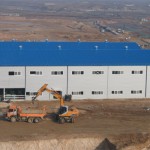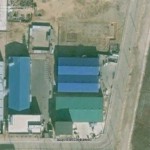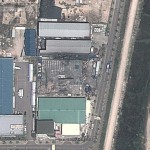From the Joong Ang Daily:
South Korean delegates at the inter-Korean economic talks here won a victory of sorts early yesterday morning; North Korea agreed to Seoul’s linkage of the completion of test runs of the newly reconnected railroads across the Demilitarized Zone to its offer of raw materials for the North’s light industries.
But in what apparently was a face-saving gesture to the North, the linkage was not made explicit in the joint announcement of the results of the four-day meeting. South Korea agreed to supply a package of raw materials for the North’s shoe, soap and textile industries worth $80 million, which will be delivered “when necessary conditions are met.” The agreement said nothing more about the conditions, but the rail tests, most recently cancelled by North Korea the day before they were to be conducted last month, were clearly the point at issue. Kim Chun-sig, the Seoul delegation’s spokesman, made that explicit. “The trial train runs are linked with the supply of raw materials, and the agreed announcement was issued with that understanding by the North.” He said agreement to the linkage was not easily won from the North; Seoul’s delegates stressed the uproar that would break out here if that condition were not attached.
The aid will be in the form of a loan to be repaid in kind ― North Korean natural resources ― over a 15-year period with an interest rate of 1 percent. The two delegations met the press to announce the agreement, saying they had signed a nine-point agreement and a 10-point supplemental document dealing with the aid package.
In the agreement, the aid is to be delivered in August. Mr. Kim said that meant that the necessary military-to-military agreement on safeguards required before travelers cross the Demilitarized Zone must be in place and the rails tests completed.
The strings attached to the aid package are something of a departure for the Roh administration, which has been tolerant ― far too tolerant, critics in the South contend ― of North Korea’s penchant for accepting aid donations while failing to keep promises it had made in return. Pyongyang’s cancellation of the railroad tests in late May was, apparently, too much for Seoul to stomach politically. The tests were cancelled the day before they were to take place, and the North blamed “political instability” in the South and the lack of a military safeguards agreement that the North itself has blocked.
A Seoul delegate said proudly, “Unlike in the past, we focused on enforcement of the agreement and secured some leverage over North Korea.” The two sides made some modest progress on other issues. They agreed to conduct negotiations on a joint project to mine gravel from the mouth of the Han River inside the Demilitarized Zone. They agreed that military-to-military agreements would be necessary for safety and security reasons. The project had been suggested by Seoul in April, and reflects the dwindling supply of such material here because of South Korea’s 30-year construction boom.
Other agreed meetings will address administrative procedures at the Kaesong Industrial Complex, flood control on cross-DMZ rivers and exchanges of weather data, especially on the yellow dust storms that originate in China’s Gobi Desert.



